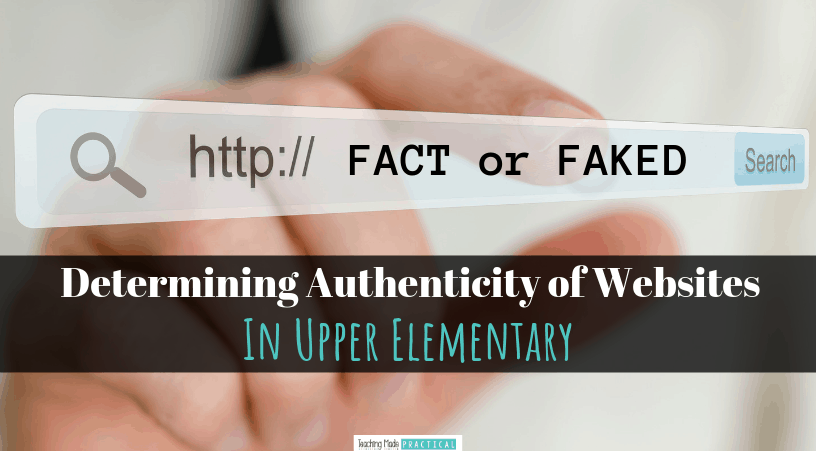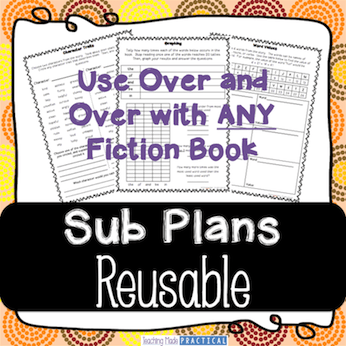
Fact or Faked
Written by Guest Blogger Amy Clancy
By this point in time- we all realize the power of social media and of the media in general. We know that our students are often left unchecked at home, filling their brains with vivid, interactive experiences, images, and messages. How young is too young to begin teaching credibility of sources? If they can read, they should be informed.
So where does one start? What materials should one use to reach an elementary audience? Well, they know much more than you think they do, and even young students think they’ve got the Internet all figured out because they use it. However, time and again, it is obvious that students do not, in fact, know how to use the Internet as a tool. They also do not comprehend that danger is a click away.
Several key factors play a role in teacher instruction when it comes to credibility of sources and the age group in which they are teaching. A Graphic organizer and teacher think- alouds/ modeling are both key in the beginning as students become more aware of what to look for. I have used the below websites with middle school students as young as 5th grade. Yes, some students get hung up on vocabulary- so in a way these are rich texts, but they are also all faked. For elementary/lower middle school students, I like to use the Graphic organizer noted below but we really focus on content and purpose to begin. You will see below that I offer a scaffolding for students to move from common sense, to tools online to research to determine validity in a website’s message.
In the first case below, it’s all about common sense. I like to use this activity first. It begins by looking at no-nonsense sayings that most are familiar with. While the activity focuses on fairness and ethics too- I only focus on accuracy. Once we use some of the sayings and others we’ve heard of- including Unreal/Conditional Statements, we are ready to move to our first website with the thought, “Is everything we read online true? How do we know?”
Website 1
We begin discussing what students know and don’t know about bread- building schema. Can bread be dangerous to some? Next, give students time to peruse the website, using this 5Ws of Website Evaluation Graphic Organizer to determine the following:
Discussion Questions: What is the website about? Positive or negative? How can you tell? Write down 2 examples that prove it. Who is the author? Date? What statements are true? Or could be true? How do you know?
Vocabulary will come up as the piece is wordy- but most students should be able to find “facts” that are silly or incorrect. Challenge students to look up some words they don’t know.
As a class, select a fact and the teacher should model a think aloud as she does the research before the class, getting input from students and thinking aloud to go deeper into what is wrong with this website.
Website 2
Another rather simple website for elementary students is Dog Island. Give students time to peruse the website. I recommend that you have students stick to the top link bar only. I have also photocopied certain parts- the front page and those tabs I wanted students to analyze.
Discussion Questions: What is it about? What is their message? How do you know? Give evidence from the text. What is the date? Who sponsors this page?
The key here is that in small groups or with a shoulder partner- students can help each other find the flaws. The teacher takes it from there- getting their input, but always does a think-aloud so students can see a way of thinking as well as repetitive practice with look-fors on a webpage when dealing with authenticity.
I stick to the links at the top of the page as those along the sidebars can lead to some… interesting conversations.

Once we understand what this island is for, we pay attention to Visits and Rates tabs.
Student Questions: What is said on this page that sounds realistic? What is said that sounds a bit fishy?
Note: The ending of each of these pages makes statements that a true business or charity would not make.
Website 3 - Advanced Practice/Gifted/Small Group
This website has a lot of technical language, but higher-level elementary students might work through this in a small group to determine if it’s fact or faked. The commonsense factor also plays a part in this website.
Discussion Questions: What is it about? Their purpose? Provide two statements that prove this. Date? Author?
Next, we discuss the site. Students will obviously begin to say that velcro is not grown. But is it?
Direct students to Define Velcro/Nylon
Have students visit this page about the making and uses of Velcro.
Discussion Questions: Is this grown? Do we have enough information? Let’s go back and look at the website again- what is its purpose? What are they trying to get us to do or to know?
Other Velcro sources:
How is Velcro Made (an easy to ready article)
Video: How Velcro is Made - Very long and with Japanese subtitles but does show the process of making Velcro.
I love this activity because although challenging for kids, there are enough relatively simple resources on the web that can help them disprove a website- it just takes research. So, this is now scaffolded- where your students can try their hand at investigating this site for authenticity and you are providing guided research. As students come to their conclusions, they can practice with a thesis statement.
This website is true because... (Research quotes and author)
This website is untrue because... (Same as above).
They are working on making a statement and providing evidence from the text, using complex text and teacher facilitation.
More Ideas
It is never too late to teach kids the dangers of the Internet; and with alleged fake political ads, Deep Fake Videos, and other advances in technology, determining the credibility of a website is simply a basic need today.
As teachers, we must move forward as we will have a lot of catching up to do if we don’t. These activities are simple, can be done in small groups, teacher-led, or both with teacher think-aloud time after kids have worked on analyzing the message and what they read/see.
There are so many fun websites to teach credibility including:
Save the Pacific Northwest Tree Octopus
When you search Tree Octopus, you’ll get some great starting sites and resources to find out if this site is fact or faked, including Wikipedia and Snopes. Students won’t even have to leave the search page. They can begin to use these tools to determine authenticity.
I love this site as it’s all about water. A higher-level site, yes, but it’s likely that students will be able to read some of the content, and then use Snopes and Wikipedia as basic research tools to disprove the site immediately.
Crucial 21st Century Skill
In closing, the creativity of the web offers fact and faked sources that we can use to teach our students how to determine authenticity.
I have copied emails that offered me millions and used it in the classroom. The kids find it humorous until they realize people fall for this kind of thing all the time. Progressing through these lessons will enable students at a younger age to begin to dissect messages for truth using tools, common sense and research- something crucial in the 21st century for students at a younger age, now more than ever.
Amy Clancy - NBCT
20+ years in Education
ELA Specialist- Walton-Verona MS
WVMS Yearbook/Podcasting Advisor
President- KCTE/LA kcte.org

Never Stress Over Sub Plans Again!

When you subscribe to my newsletter below, I’ll send you my Reusable Sub Plans for FREE. You’ll also get updates on new blog posts and freebies.
